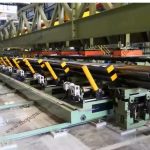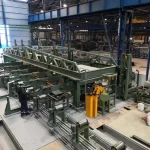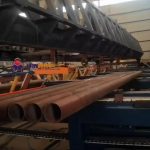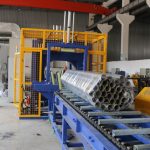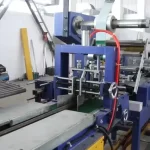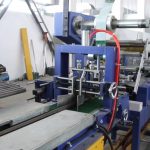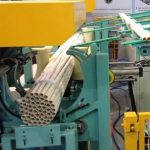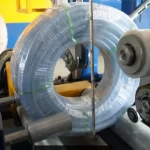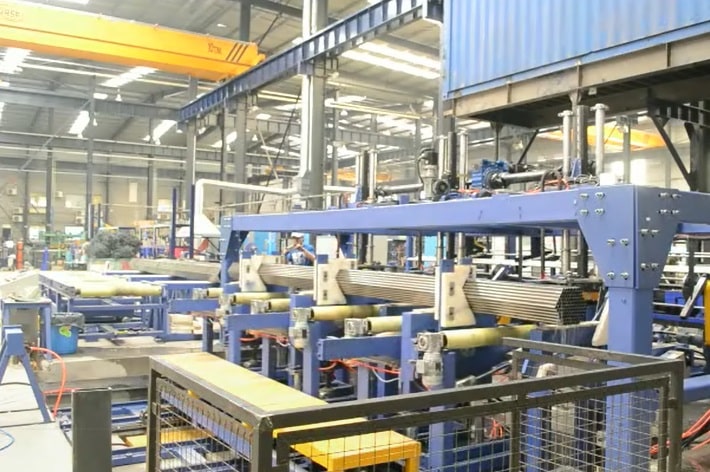
Steel Tube Packing Line Cost vs. Benefit: What You Should Know
In the world of manufacturing, efficiency and precision are key. For those dealing with steel tubes, a steel tube packing line becomes an essential part of the production process. Understanding the cost versus benefit of these lines is crucial for making informed decisions that align with your business goals. This comprehensive guide will dive into the intricacies of steel tube packing lines, helping you navigate through the costs and benefits with ease.
Understanding Steel Tube Packing Lines
What Are Steel Tube Packing Lines?
Steel tube packing lines are automated systems designed to handle the packaging of steel tubes. These lines streamline the process, ensuring that tubes are packed securely and efficiently for transport and storage. They typically include several stages such as bundling, strapping, and wrapping.
Why Are They Important?
The primary purpose of a steel tube packing line is to protect the product during transit and storage. Proper packaging prevents damage, maintains quality, and enhances the presentation of the product. Moreover, automation in packing lines significantly reduces manual labor, increasing overall productivity.
Analyzing the Costs
Initial Investment
The upfront cost of a steel tube packing line can be substantial. This includes the purchase of machinery, installation, and training of personnel. However, this initial expense is often offset by the long-term benefits.
Operational Costs
Operational costs include maintenance, energy consumption, and labor. Regular maintenance ensures the machinery runs smoothly and lasts longer, while energy-efficient machines can reduce utility bills.
Hidden Costs
It’s important to consider potential hidden costs such as downtime during installation or unexpected repairs. Planning for these can prevent budget overruns and ensure a smoother operation.
Evaluating the Benefits
Increased Efficiency
One of the most significant benefits of steel tube packing lines is increased efficiency. Automation reduces the time required for packing, allowing more products to be processed in less time.
Improved Product Quality
Automated packing lines ensure consistent and secure packaging, which protects the integrity of steel tubes. This consistency reduces the risk of damage during transport.
Labor Savings
Reducing the need for manual labor is another key benefit. Automation allows employees to focus on other critical tasks, improving overall productivity and job satisfaction.
Enhanced Safety
Automated systems reduce the risk of workplace injuries associated with manual packing. This not only protects workers but also reduces potential liability for the company.
Key Features of High-Performance Packing Lines
Customization and Flexibility
Modern packing lines offer customization to handle different sizes and types of steel tubes. Flexibility in design allows businesses to adapt to changing product lines without significant additional costs.
Advanced Technology
Incorporating cutting-edge technology like IoT can enhance the functionality of packing lines. Real-time monitoring and data analytics help optimize the packing process and predict maintenance needs.
Durability and Reliability
Investing in durable and reliable machines reduces downtime and extends the life of the equipment. High-quality materials and robust construction are essential for long-lasting performance.
Industry-Specific Considerations
Manufacturing Sector
In manufacturing, precision and speed are paramount. Packing lines must align with production rates to avoid bottlenecks and ensure smooth operations.
Logistics and Distribution
For logistics, the focus is on packaging that withstands transport conditions. Secure and efficient packing lines minimize the risk of damage during transit.
Construction Industry
In construction, the emphasis is on bulk handling. Packing lines that can manage large quantities efficiently are essential for meeting project deadlines.
Environmental Impacts
Energy Efficiency
Energy-efficient packing lines reduce operational costs and carbon footprint. Investing in green technology not only benefits the environment but also enhances the company’s reputation.
Sustainable Materials
Using recyclable or biodegradable materials in packaging can further reduce environmental impact. This practice aligns with growing consumer demand for sustainability.
Comparing Different Packing Lines
Manual vs. Automated
While manual packing lines are less costly upfront, automated systems offer greater long-term benefits in terms of speed, efficiency, and safety.
Semi-Automated Options
For businesses not ready to fully automate, semi-automated lines offer a balance between manual and automated processes, providing some benefits of automation without the full investment.
Case Studies and Real-World Applications
Examining case studies from businesses that have implemented steel tube packing lines can provide valuable insights. These examples illustrate the tangible benefits and challenges encountered, helping you make informed decisions.
Factors to Consider When Choosing a Packing Line
Budget and ROI
Assessing your budget and expected return on investment is crucial. Consider both short-term expenses and long-term gains when evaluating options.
Space and Layout
Ensure the packing line fits within your facility’s space constraints and integrates well with existing processes.
Supplier Reputation
Choosing a reputable supplier with strong customer support and service can make a significant difference in implementation and ongoing operation.
Conclusion
Investing in a steel tube packing line offers numerous benefits, from improved efficiency and product quality to labor savings and enhanced safety. While the initial costs can be significant, the long-term advantages often outweigh these expenses. By carefully assessing your specific needs and evaluating the available options, you can choose a packing line that aligns with your business objectives and sets you up for future success.
